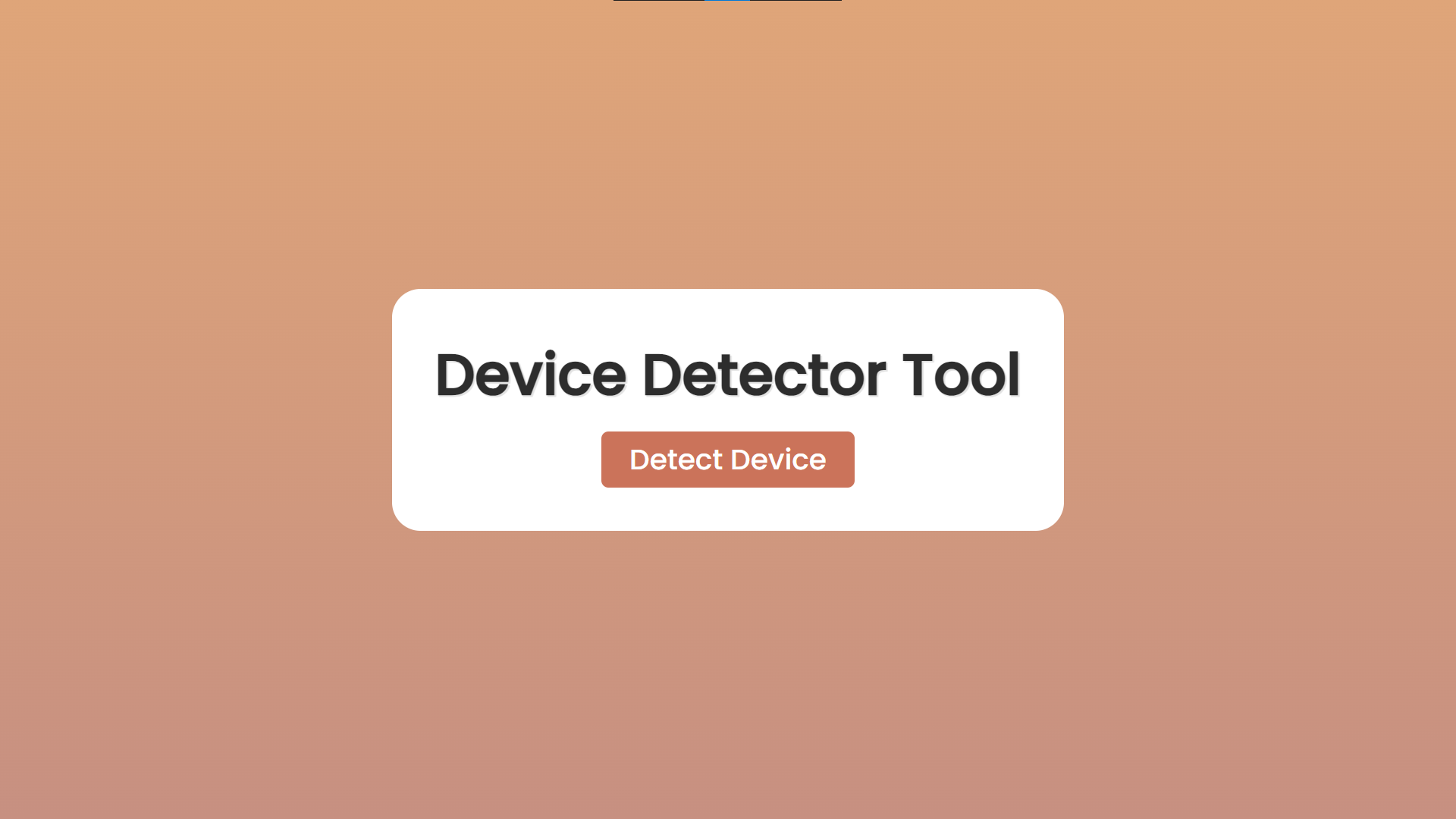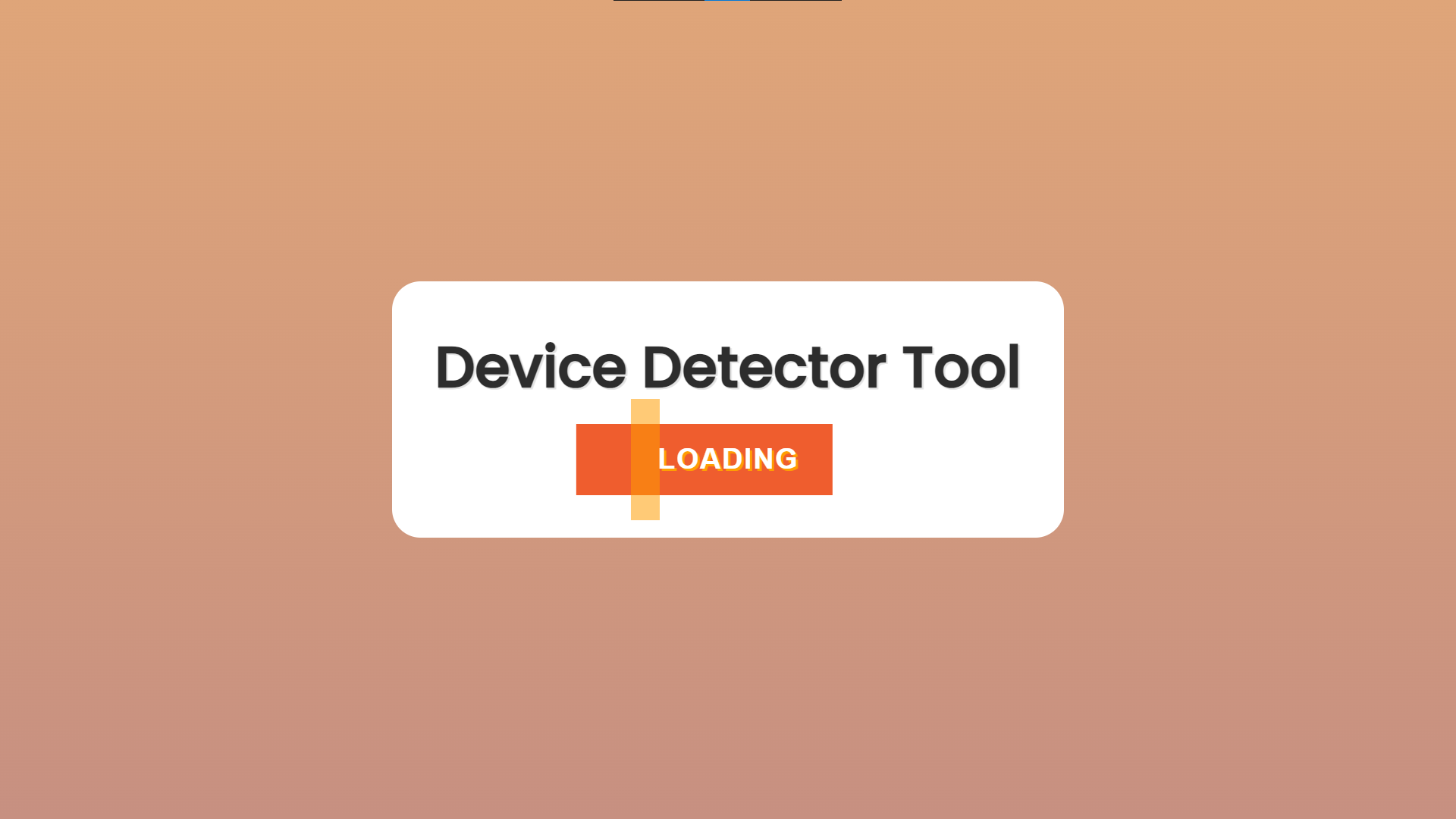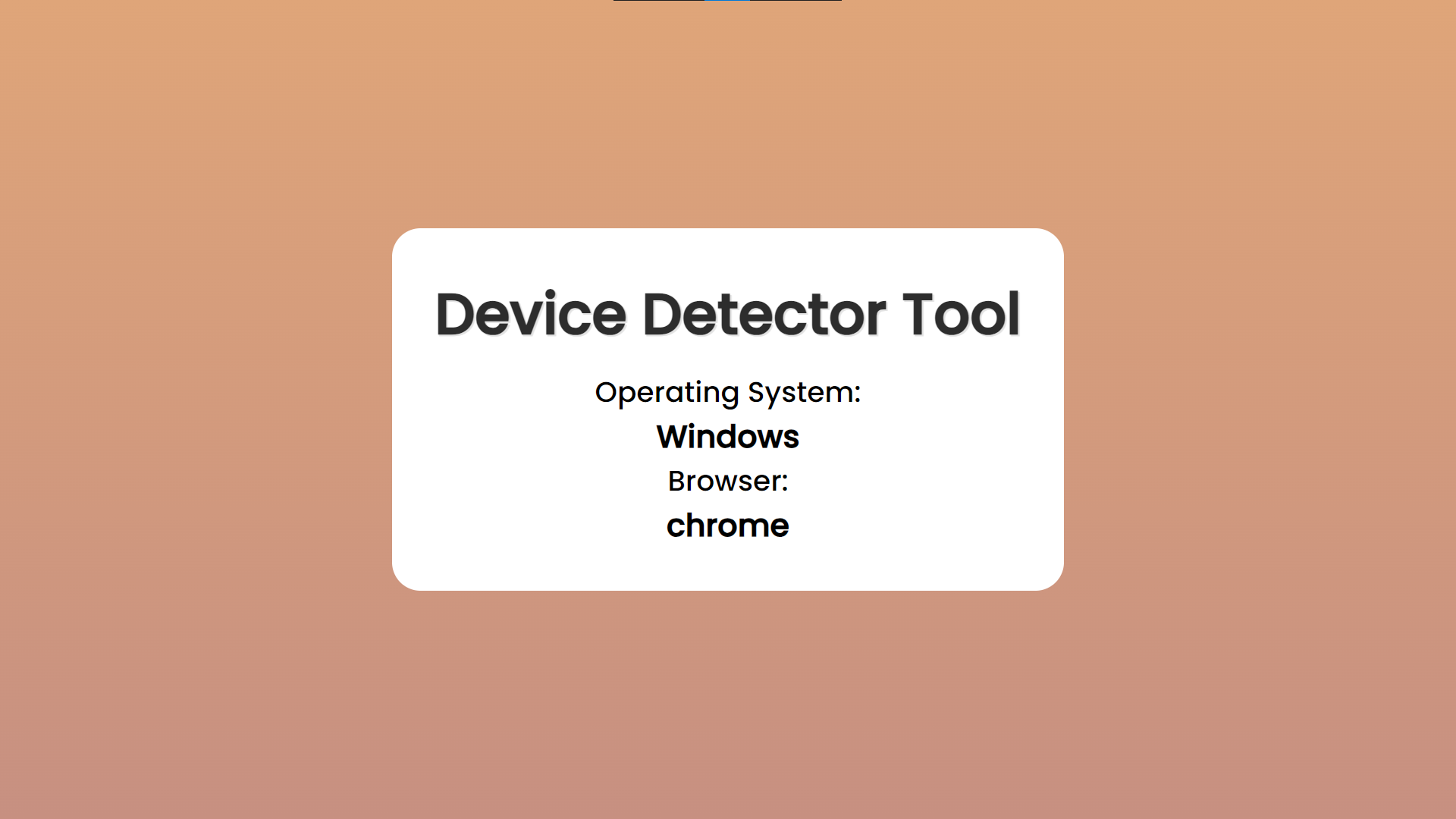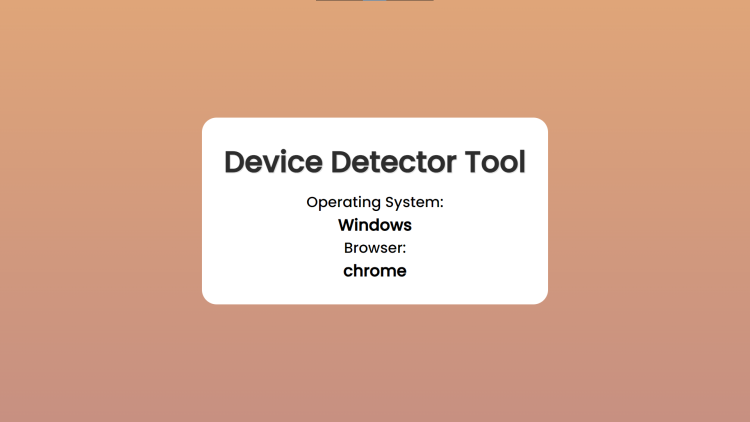Device Detector Tool Using HTML, CSS and JavaScript with Source Code
Welcome to the Device Detector Tool, a web-based application designed to identify and display the user's operating system and browser. This tool leverages modern web technologies, including HTML, CSS, and JavaScript, to provide an intuitive and interactive experience. With its sleek design and engaging loader animation, the Device Detector Tool offers users a seamless way to gain insights into their device's specifications.
The project highlights the practical application of client-side detection, showcasing the power of JavaScript in dynamically identifying and displaying device information. HTML structures the content, CSS enhances the visual appeal with a gradient background and smooth animations, and JavaScript handles the core detection functionality. This combination of technologies results in a responsive and user-friendly interface, making the Device Detector Tool both educational and functional.
You may also check this simple HTML, CSS and JavaScript projects:
- Who's That Pokemon Game
- Sliding Puzzle Game
- Blob Maker Tool
- Coin Flipper Web App
- Product Filter and Search
Features
- Operating System Detection: Accurately identifies the user's operating system (e.g., Windows, Mac OS, iOS, Android, Linux).
- Browser Detection: Determines the user's browser (e.g., Chrome, Safari, Firefox, Internet Explorer).
- Animated Loader: Displays an engaging loader animation while detecting the device information.
- User-friendly Interface: Simple and intuitive interface for users to interact with the tool.
Technologies Used
- HTML5: Provides the basic structure and content of the web page.
- CSS3: Utilized for styling the interface, including a modern background gradient, layout management, and the loader animation.
- JavaScript: Implements the core functionality of the tool, including device detection and dynamic content updates.
How to Use
- Open the Web Page: Load the HTML file in any modern web browser.
- Initiate Detection: Click the "Detect Device" button to start the detection process.
- View the Loader: An animated "LOADING" message will appear, indicating that the detection process is ongoing.
- See the Results: After approximately 3 seconds, the loader will disappear, and the results will be displayed. The tool will show the detected operating system and browser in a clean and readable format.
Sample Screenshots of the Project:
Landing Page

Loader

Result

How to Run?
- Download the provided source code zip file.
- Extract the downloaded zip file.
- Open the html file and you are now ready to go!
Video Demonstration for Installation/Setup:
Conclusion:
In conclusion, the Device Detector Tool exemplifies the effective use of HTML, CSS, and JavaScript to create a practical, user-friendly web application. By accurately detecting and displaying the user's operating system and browser, the tool not only provides valuable information but also demonstrates the power of client-side technologies in delivering dynamic and responsive user experiences. This project serves as an excellent learning resource for understanding how these web technologies can work together to build interactive and engaging applications.
That's it! I hope this "Device Detector Tool Using HTML, CSS and JavaScript" will assist you on your programming journey, providing value to your current and upcoming projects.
For additional tutorials and free source codes, explore our website.
Enjoy Coding :>>
Note: Due to the size or complexity of this submission, the author has submitted it as a .zip file to shorten your download time. After downloading it, you will need a program like Winzip to decompress it.
Virus note: All files are scanned once-a-day by SourceCodester.com for viruses, but new viruses come out every day, so no prevention program can catch 100% of them.
FOR YOUR OWN SAFETY, PLEASE:
1. Re-scan downloaded files using your personal virus checker before using it.
2. NEVER, EVER run compiled files (.exe's, .ocx's, .dll's etc.)--only run source code.

